
Enoch Louis Lowe was the 29th Governor of Maryland in the United States from 1851 to 1854.
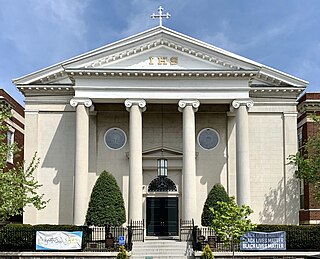
Holy Trinity Catholic Church is a Catholic church run by the Jesuit order that is located in the Georgetown neighborhood of Washington, D.C., in the United States. Holy Trinity Parish was founded in 1787 and is the oldest Roman Catholic community and house of worship in continuous operation both in Georgetown and in the larger city of Washington, D.C. The original church building was completed in 1794. It is now called the Chapel of St. Ignatius, and is used for smaller ecclesiastical celebrations and as an auxiliary space for parish activities. A larger church building, necessitated by the growing community, was dedicated in 1851, and still serves as the parish church today.

Francis Ignatius Neale, also known as Francis Xavier Neale, was an American Catholic priest and Jesuit who led several academic and religious institutions in Washington, D.C., and Maryland. He played a substantial role in the Jesuit order's resurgence in the United States.

Saint John's Catholic Prep is a private, Roman Catholic, coeducational, college preparatory high school in Buckeystown, Maryland, located just southwest of Frederick City. At the time of its founding in 1829, it was located on Second Street in eastern downtown Frederick. Beginning in 1958 and for 45 years thereafter, the school was housed in the historic "Prospect Hall" mansion, (1787–1803), also just southwest of Frederick. St. John's was the first independent Roman Catholic school in the state of Maryland. It was also the first Roman Catholic secondary school in the state of Maryland.

John Bapst was a Swiss Jesuit missionary and educator who became the first president of Boston College.
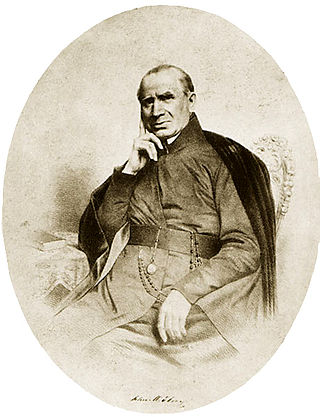
John McElroy was a Jesuit priest who founded Catholic schools in the United States. After emigrating to the United States in 1803, McElroy enrolled in Georgetown University in 1806, the same year in which he joined the Society of Jesus as a lay brother. His brother Anthony also became a Jesuit. McElroy assumed the management of Georgetown's financial affairs. He was ordained a priest in 1817. In 1822 he was sent to Frederick, Maryland, where he was to remain for 23 years as pastor of St. John the Evangelist Catholic Church in downtown Frederick. It was in Frederick that he founded St. John's Literary Institution. During the Mexican–American War, McElroy served as an Army chaplain, and on his return from Mexico he went to Boston, where he established Boston College and Boston College High School.

William Hickley Gross, C.Ss.R., was an American prelate of the Roman Catholic Church who was a member of the Congregation of the Most Holy Redeemer. He served as Bishop of Savannah (1873–1885) and Archbishop of Oregon City (1885–1898).
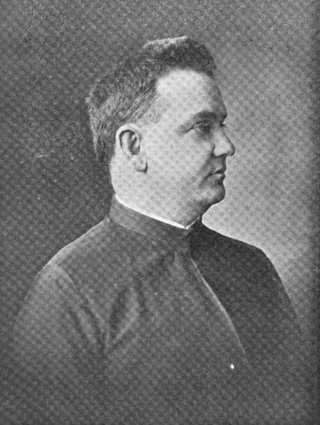
William George Read Mullan, SJ, was an American Jesuit and academic who served as President of Boston College from 1898 to 1903 and President of Loyola University Maryland from 1907 to 1908.

Bernard A. Maguire was an Irish-American Catholic priest and Jesuit who served twice as the president of Georgetown University. Born in Ireland, he emigrated to the United States at the age of six, and his family settled in Maryland. Maguire attended Saint John's College in Frederick, Maryland, and then entered the Society of Jesus in 1837. He continued his studies at Georgetown University, where he also taught and was prefect, until his ordination to the priesthood in 1851.
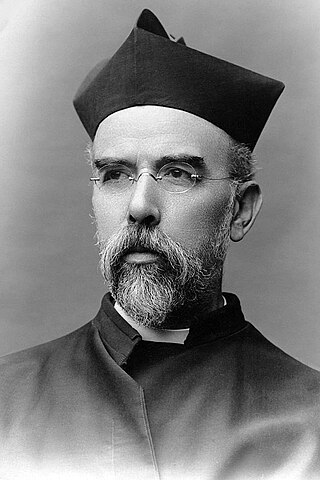
Joseph J. Himmel was an American Catholic priest and Jesuit. For much of his early life, he was a missionary throughout the northeast United States and retreat master. Later in life, he was president of Gonzaga College and Georgetown University in Washington, D.C.
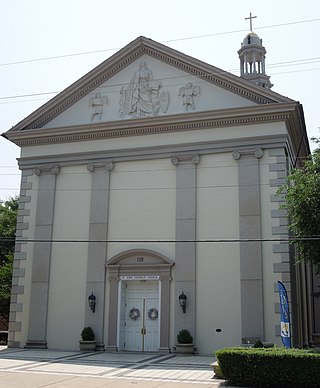
St. John the Evangelist Catholic Church is a parish of the Roman Catholic Church in Frederick, Maryland, part of the Archdiocese of Baltimore. Founded in 1763, after the repeal of the British penal laws, as the first Catholic church in Frederick County, the parish occupied two former buildings before the completion of the present Greek Revival church in 1837. At the time of its opening, the church was the largest parish church in the United States and was the first Catholic church to be consecrated in the Diocese of Baltimore. Today, the church remains the tallest building in the city of Frederick.

John William Beschter was a Catholic priest and Jesuit from the Duchy of Luxembourg in the Austrian Netherlands. He emigrated to the United States as a missionary in 1807, where he ministered in rural Pennsylvania and Maryland. Beschter was the last Jesuit pastor of St. Mary's Church in Lancaster, as well as the pastor of St. John the Evangelist Church in Baltimore, Maryland. He was also a priest at several other German-speaking churches in Pennsylvania.
Enoch Fenwick was an American Catholic priest and Jesuit who ministered throughout Maryland and became the twelfth president of Georgetown College. Descending from one of the original Catholic settlers of the Province of Maryland, he studied at Georgetown College in what is now Washington, D.C. Like his brother and future bishop, Benedict Joseph Fenwick, he entered the priesthood, studying at St. Mary's Seminary before entering the Society of Jesus, which was suppressed at the time. He was made rector of St. Peter's Pro-Cathedral in Baltimore by Archbishop John Carroll, and remained in the position for ten years. Near the end of his pastorate, he was also made vicar general of the Archdiocese of Baltimore, which involved traveling to say Mass in remote parishes throughout rural Maryland.

William J. Devlin, S.J. was an American Catholic priest and Jesuit. Born in New York City, he spent many of his early years in Europe, where he was educated at Stonyhurst College in England. Devlin entered the Society of Jesus in Maryland in 1893, and studied at Woodstock College. He became a professor at Boston College in 1910, and eventually became the dean.
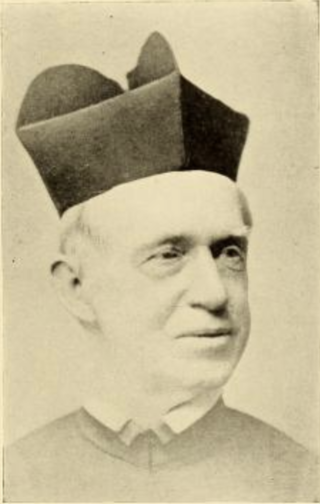
William Francis Clarke was an American Catholic priest and Jesuit who held several senior positions at Jesuit institutions in Maryland and Washington, D.C. Born in Washington, he descended from several early colonial families of Maryland. He was educated at Gonzaga College and its successor institutions during the suppression of the Society of Jesus, followed by Georgetown College. After his entrance into the Jesuit order, he taught for several years at Georgetown, and became the pastor of St. Joseph's Church in Baltimore, where he took uncommon measures to integrate black Catholics and Italian immigrants into parish life.
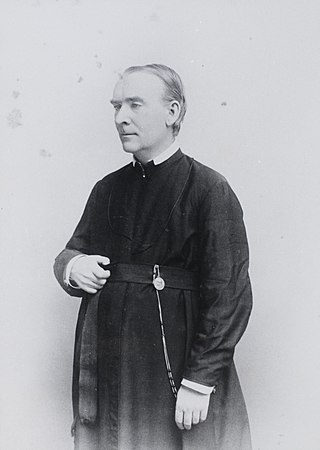
Edward Ignatius Devitt was a Canadian American priest, Jesuit, and historian of the American Catholic Church. Born in Saint John, New Brunswick, he moved with his family to Boston, Massachusetts, at a young age. He studied in public schools in the city before enrolling at the College of the Holy Cross. Devitt spent two years there, and then entered the Society of Jesus in 1859. He studied at the novitiate in Frederick, Maryland, and at the newly opened Woodstock College. He briefly taught at the Washington Seminary during his studies, and after graduating, was a professor for the next thirty years at Holy Cross, Woodstock, and Georgetown University.

Robert Wasson Brady was an American Catholic priest who led several Jesuit institutions in the United States. He served twice as the president of the College of the Holy Cross from 1867 to 1869 and from 1883 to 1887. He was also the second president of Boston College from 1869 to 1870 and the provincial superior of the Jesuits' Maryland Province from 1877 to 1882.

Joseph B. O'Hagan was an Irish-American Catholic priest and Jesuit who was the president of the College of the Holy Cross from 1873 to 1878. Born in Ireland, he emigrated to Nova Scotia, Canada, at a young age and entered the seminary. While in Boston, Massachusetts, he decided to enter the Society of Jesus. He studied at Georgetown University and the Catholic University of Louvain before returning to the United States and becoming a chaplain in the Union Army during the Civil War.
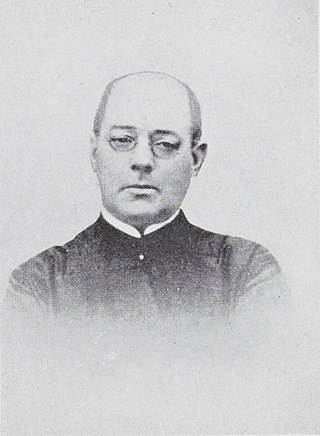
Edward Victor Boursaud was an American Catholic priest and Jesuit who was the president of Boston College from 1884 to 1887. Raised in New York City and France, he studied at Mount St. Mary's College in Maryland before entering the Society of Jesus in 1863. For the next 18 years, he studied and taught at Jesuit institutions, including Boston College, Georgetown College, and Woodstock College, as well as the novitiate in Frederick, Maryland. In 1881 and 1887, he served three-year terms in Italy as the assistant secretary to the Jesuit Superior General for the English-speaking world.
Edward D. Boone was an American Catholic priest and Jesuit who was the president of the College of the Holy Cross from 1878 to 1883. Born in Washington, D.C., he graduated from Holy Cross in 1851 and entered the Society of Jesus the following year. Before becoming president, he taught at various Jesuit colleges. He spent the last twenty-five years of his life at Loyola College in Maryland and as a prison chaplain.




















